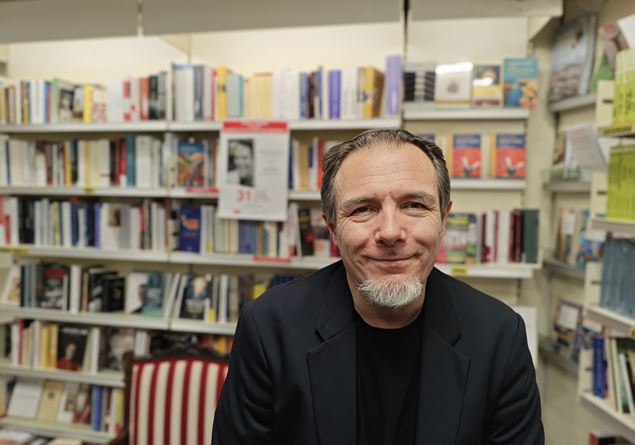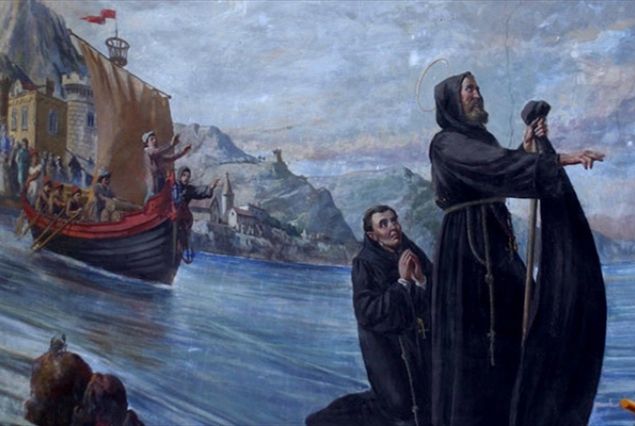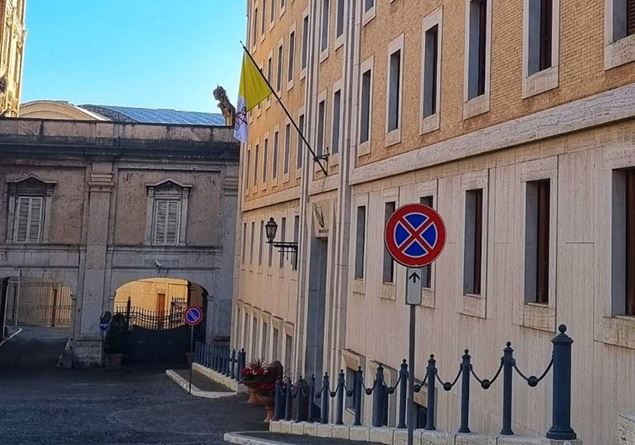This extraordinary thaumaturge of the fifteenth century is one of the More representative and most popular figures of the Catholic Church.
He was born in Paola (Cosenza) the March 27, 1416 from a family of modest conditions, but in which faith had a privileged place. He was called Francesco to honor a vote made by his parents when, being the mother in old age, there seemed to be no longer hope of having children.
Twelve year old, he was sent – always to honor that vote – for a year in the convent of the minors of S. Marco Argentano to dress the Franciscan dress, revealing an extraordinary spiritual maturity enriched by the gift of supernatural events; The first cases of bilocation are of that period: In fact, the friars saw him serve the mass in the church and, at the same time, intent on setting the table in the refectory of the convent.
After the year, Francesco returned to Paola and together with his parents he made a pilgrimage to Assisi, also touching Montecassino, Loreto, Monte Luco near Spoleto and Rome.
At 13 he devoted himself to the hermit life
Upon returning, the then thirteen -year -old obtained permission to conduct hermit life in a campicello owned paternally from Paola, to devote himself to prayer, to work and to make penance, according to the style of the ancient anacoretes who in the past had made the Mercurion area famous, located little north of Paola. His example soon pushed other young people to share that experience, and thus a group called was formed “Hermit by Fra Francesco”; To host them, he built some cells and, later, a church flanked by a square cloister recognized as a proto-convent of an institution to which he gave the physiognomy of a beggar religious order.
In 1450, who died the mother of the saint, the father decided to enter that community too, remaining there until his death, under the guidance of his son. Since new vocations always came, other rooms were built and During these works, numerous prodigious facts occurred in what was then called the “area of miracles”.
Pellegrini is still shown A furnace in which the saint entered twice to repair it, while he was burning at full speed, coming out unharmed. Other episodes took place during the construction of the convents of Paterno, Spezzano della Sila and Corigliano.
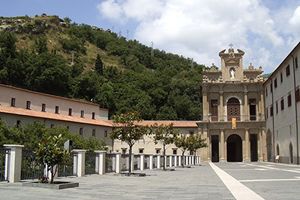
The Sanctuary of Paola
He made himself invisible to the soldiers of Ferrante d’Aragona
Francesco was always available to the poor and the sick of all kinds, among which he operated prodigious healings in favor of paralyzes, lepers, blind, possessions and even the resurrection of a boy, his nephew Nicola, son of his sister Brigida.
Specially His charitable action was aimed at the workers and victims of the harassment and abuses of the powerful that justice was unable to counter.
And since he openly denounced the wrongdoings of the powerful, threatening them divine punishments, the king of Naples, Ferrante of Aragon, I annoyed one day he sent his soldiers to Paola to arrest Francesco, but he made himself invisible to their looks, despite his praying in front of the tabernacle as they forced the church.
Reject the king’s money because the result of the oppression of the subjects
The echo of these wonders also arrived in Sicily where the saint was invited to found a convent in Milazzo. In Reggio Calabria, together with two confreres he asked a boatman to ferry him for free to the other side, but he refused and then he spread his cloak on the waters, tied one end to his stick making it a sail and, between the amazement of those present, quickly reached Messina.
Pope Paul II, at this point, to ascertain what was said about Francesco, He ordered an investigation that ended positively, also because the prelate who had been commissioned to see the saint to take with the hands of the burning coals from a brazier without burning.
Died Paul II, the successor Sixtus IV ordered a second investigation, which led to the pontifical approval of the order of the minimum in 1474. Over time, the fame of holiness of the Calabrian monk had also spread in France and the king Louis XI, who was seriously ill, he sent his correspondent in Calabria with rich gifts to convince Francesco to go to him and get him healing. Initially the saint refused, but then he had to bend in front of an express order of the Pope, who believed that journey useful to the Church, who had pending issues with the French sovereign.
During the trip, Francesco was triumphantly welcomed in Naples by an incredible crowd and King Ferrante, who offered him a tray full of gold coins to build a convent in the city; But he refused and taking one of those coins, under the eyes of the sovereign he broke it with his fingers, making his blood sparkling: “Sire,” he exclaimed, “this is the blood of your subjects that you oppress and who shout revenge in the presence of God”.
In Rome, he was received by Sixtus IV who entrusted him with some important positions at the Court of Louis XI. At the pontiff the saint also spoke of the vote of “Lent perpetual” which he intended to establish as a rule of order, but Sixtus IV raised objections in this regard; Then the saint took the cardinal present, Giuliano della Rovere, the pope’s grandson, exclaiming: exclaiming: “Holy Father, here’s the one who will grant me what you reject me today”.
In fact, after the pontificates of Innocent VIII (1481-1492), Alessandro VI (1492-1503) and the very short one of Pius III (1503, only 26 days), Della Rovere was elected with the name of Julius II which, in 1505, approved the austere rule of the minimum.
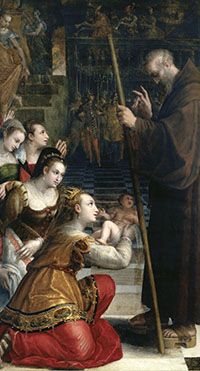
He died on Holy Friday 1507 in conjunction with the celebration of the Passion of Jesus
Arrived in France, after freeing two countries from a terrible epidemic that raged there, the saint was welcomed by the king who promised to help him spread the order and, kneeling in front of him, begged him to heal him, But after many penances and prayers, Francesco told him that God had decreed not to give him health. The king, against all expectations, received the news with resignation and, under the spiritual direction of Francesco, prepared to death by repairing the injustices committed and often receiving the sacraments.
The saint then remained definitively in France and in these twenty -five years he perfected the Rule of the minimum, confirming the fourth vote of Lent for all days of the year, founded the “second” and the “third order”, And he propagated the devotion of the “thirteen Fridays of passion”.
On the night of January 15, 1507 he heard a voice that called him to paradise and from that moment he no longer came out of his cell multiplying prayers and penances.
On Holy Thursday, after listening to the Mass, he had himself relaxed on a large cross and on Friday, while the “passion” was singing from the Gospel according to John, he pushed in coincidence with the words “and inclined capita, tradide spiritum” (“and, bent the head, made the spirit”). It was April 2, 1507.
Francesco was ninety -one years old and six days. He was beatified in 1513 by Leo X and he himself canonized on 1 May 1519.
In 1943, Pius XII proclaimed him “patron of the sea people of the Italian nation”.

